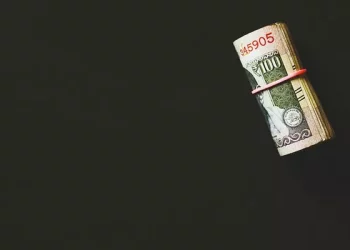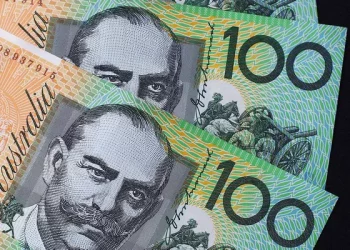The Russian ruble, as the national currency of the Russian Federation, holds significant historical and symbolic value. Its banknotes and coins depict various aspects of Russia’s rich cultural, historical, and architectural heritage. However, unlike some currencies that prominently feature the faces of notable individuals, the Russian ruble does not typically showcase portraits of people. This sets it apart from currencies such as the U.S. dollar, British pound, or European euro, where national figures often hold prominent positions on the currency notes.
Instead, the ruble emphasizes monuments, landmarks, and regional symbols that reflect the breadth and depth of Russia’s historical and cultural landscape. This approach reinforces the importance of national unity and shared cultural identity across the vast territories that make up the Russian Federation. However, it is essential to explore the historical context, changes in design, and symbolism found on the ruble to understand whose “face” or influence is truly represented on this currency.
The Historical Evolution of the Russian Ruble
The Russian ruble is one of the world’s oldest currencies, with its origins tracing back to the 13th century. The word “ruble” comes from the Russian verb “rubit,” which means to chop or cut. Early rubles were pieces of silver bars that were chopped into measured sizes. This method of creating currency reflects Russia’s medieval economic practices, where precious metals were the standard for trade.
Over the centuries, the ruble has undergone numerous changes, especially during periods of political upheaval and regime changes. From the Tsarist ruble used during the Russian Empire to the Soviet ruble introduced after the Russian Revolution of 1917, the currency has been a reflection of the state’s identity and economic structure. Each period introduced different symbols, designs, and, occasionally, portraits of leaders or revolutionary figures on coins and notes.
The modern Russian ruble was introduced following the dissolution of the Soviet Union in 1991. The transition from the Soviet ruble to the Russian ruble was part of broader economic reforms aimed at stabilizing the Russian economy in the post-Soviet era. With this shift, new designs were created to reflect the new Russian Federation, focusing on landmarks and symbols rather than individual faces.
Symbolism on Modern Russian Banknotes
The design of contemporary Russian banknotes primarily highlights the country’s architectural and cultural heritage. Each denomination features a specific city or region of Russia, and on each note, landmarks and monuments from that area are prominently displayed. These design choices reflect the diverse and unified nature of the Russian Federation, with an emphasis on historical continuity and regional pride.
For example, the 100-ruble note features the city of Moscow, with images of the Bolshoi Theatre and a statue of Apollo, symbolizing the cultural and artistic legacy of Russia’s capital. The 1,000-ruble note showcases the city of Yaroslavl, a historic city known for its importance in the development of Russian statehood and Orthodox Christianity. The 5,000-ruble note highlights Khabarovsk, a city in Russia’s Far East, with an image of a monument to the renowned Russian general Muravyov-Amursky, who played a significant role in the expansion of Russian territories in the 19th century.
While the designs do not typically feature individual portraits, the presence of historical figures in the form of statues or monuments on the currency reflects the Russian state’s intention to honor key contributors to its national development. These symbols serve as a reminder of the importance of regional contributions to the Russian state, promoting unity across vast geographical areas.
Coins: Historical Figures and Leaders
While the focus of Russian banknotes is on regional and architectural symbolism, the coinage of the Russian ruble occasionally includes depictions of historical figures. This practice is more common with commemorative coins issued by the Central Bank of Russia. Such coins often honor significant historical events, military victories, or notable Russian leaders.
For instance, special edition coins have been minted featuring prominent figures such as Peter the Great, Catherine the Great, and Alexander Nevsky, all of whom played pivotal roles in shaping Russian history. These coins serve as commemorations of their leadership and contributions to the Russian state. Additionally, during the Soviet era, coins often featured figures such as Lenin, reinforcing the state’s emphasis on the leaders of the revolution and the ideological underpinnings of Soviet governance.
The commemorative nature of these coins means that they are not part of everyday currency but are instead produced for collectors and to celebrate historical milestones. Nonetheless, they serve an important role in maintaining the connection between modern Russia and its historical past, providing a platform through which the state can highlight its notable leaders and their achievements.
The Absence of Contemporary Political Figures
One of the key features of the modern Russian ruble is the absence of contemporary political figures on its banknotes and coins. Unlike the U.S. dollar, which prominently features past presidents such as George Washington, Abraham Lincoln, and Franklin D. Roosevelt, or the British pound, which has traditionally showcased the reigning monarch, the Russian ruble has made a conscious decision to avoid depicting living or recent political leaders.
This approach can be seen as a reflection of the Russian state’s desire to emphasize national unity and continuity over individual leadership. The focus on cultural and historical landmarks allows the currency to serve as a representation of the country’s shared heritage, rather than placing emphasis on specific political ideologies or leaders.
This stands in stark contrast to the Soviet period, when the ruble often featured prominent figures of the Communist Party, most notably Lenin, who was a central figure in Soviet iconography. By removing contemporary political figures from its currency, the Russian state signals a departure from the cult of personality that characterized much of the 20th century under Soviet rule.
The Role of the Central Bank of Russia in Currency Design
The Central Bank of Russia plays a crucial role in the design and issuance of the Russian ruble. As the institution responsible for the country’s monetary policy, the Central Bank carefully selects the imagery and design elements that appear on the ruble, ensuring they align with the state’s broader cultural and economic objectives.
The design process for banknotes and coins is typically informed by consultations with historians, cultural experts, and artists. The goal is to create currency that reflects the diversity and strength of the Russian Federation while promoting a sense of national pride. The decision to focus on regional landmarks and historical symbols rather than individuals is part of this broader strategy.
The Central Bank also has the authority to issue commemorative coins, which are often produced to mark significant anniversaries, events, or achievements in Russian history. These commemorative issues are an important way for the state to highlight its historical narrative and honor key figures without integrating their images into everyday currency.
The Global Context: Comparing Russia’s Approach to Currency Design
In the context of global currency design, Russia’s approach to its ruble stands out for its emphasis on landmarks and architecture over individual faces. Many other countries opt to showcase political leaders, cultural icons, or historical figures on their banknotes as a way to promote national identity and continuity.
For example, the U.S. dollar prominently features portraits of past presidents and founding fathers, emphasizing the role of individual leadership in shaping the nation’s history. In the United Kingdom, the British pound has traditionally featured the reigning monarch, underscoring the central role of the monarchy in British identity. Meanwhile, the euro, which is used across multiple European nations, avoids specific national figures altogether, instead opting for architectural designs that symbolize Europe’s shared cultural heritage.
See Also: Whose Picture Is on the Russian Ruble?
Russia’s decision to focus on regional and architectural symbols rather than individuals reflects a unique approach that underscores the vastness and diversity of the country. By showcasing different regions on each banknote, the ruble serves as a visual representation of the federation’s unity, while also honoring the historical contributions of various cities and regions to the nation’s development.
The Cultural and Economic Implications of the Ruble’s Design
The design of the Russian ruble carries both cultural and economic implications. Culturally, the currency serves as a tool for promoting national pride and unity. By highlighting key landmarks and regional symbols, the ruble reinforces the idea that the Russian Federation is a nation built on a rich and diverse cultural heritage. This approach also helps to foster a sense of belonging among the various regions of Russia, many of which have their own distinct histories and identities.
Economically, the ruble’s design plays a role in shaping perceptions of stability and continuity. A well-designed and visually appealing currency can inspire confidence among both domestic and international investors. The emphasis on historical continuity and national unity signals to the world that Russia is a stable and resilient nation, capable of overcoming challenges and maintaining its sovereignty in a rapidly changing global landscape.
In addition, the Central Bank’s decision to avoid contemporary political figures on the ruble can be seen as a strategic move to promote long-term stability. By focusing on historical landmarks rather than individual leaders, the currency avoids becoming tied to the fortunes of any particular political regime. This can help to protect the ruble from becoming a symbol of political instability or regime change, making it a more reliable store of value for both Russian citizens and international investors.
Conclusion
The Russian ruble, with its focus on landmarks, monuments, and regional symbols, offers a unique approach to currency design that reflects the breadth and diversity of the Russian Federation. While it does not feature individual faces in the way that many other global currencies do, the ruble still serves as a powerful tool for promoting national identity and unity.
By emphasizing historical continuity and regional contributions, the Russian ruble tells the story of a nation built on a rich cultural heritage. The absence of contemporary political figures on the currency further reinforces the idea that the ruble is a symbol of the state as a whole, rather than a reflection of any one individual’s influence. This approach highlights the resilience and unity of the Russian Federation, making the ruble not only a medium of exchange but also a representation of the nation’s enduring strength and identity.
Related Topics:

























